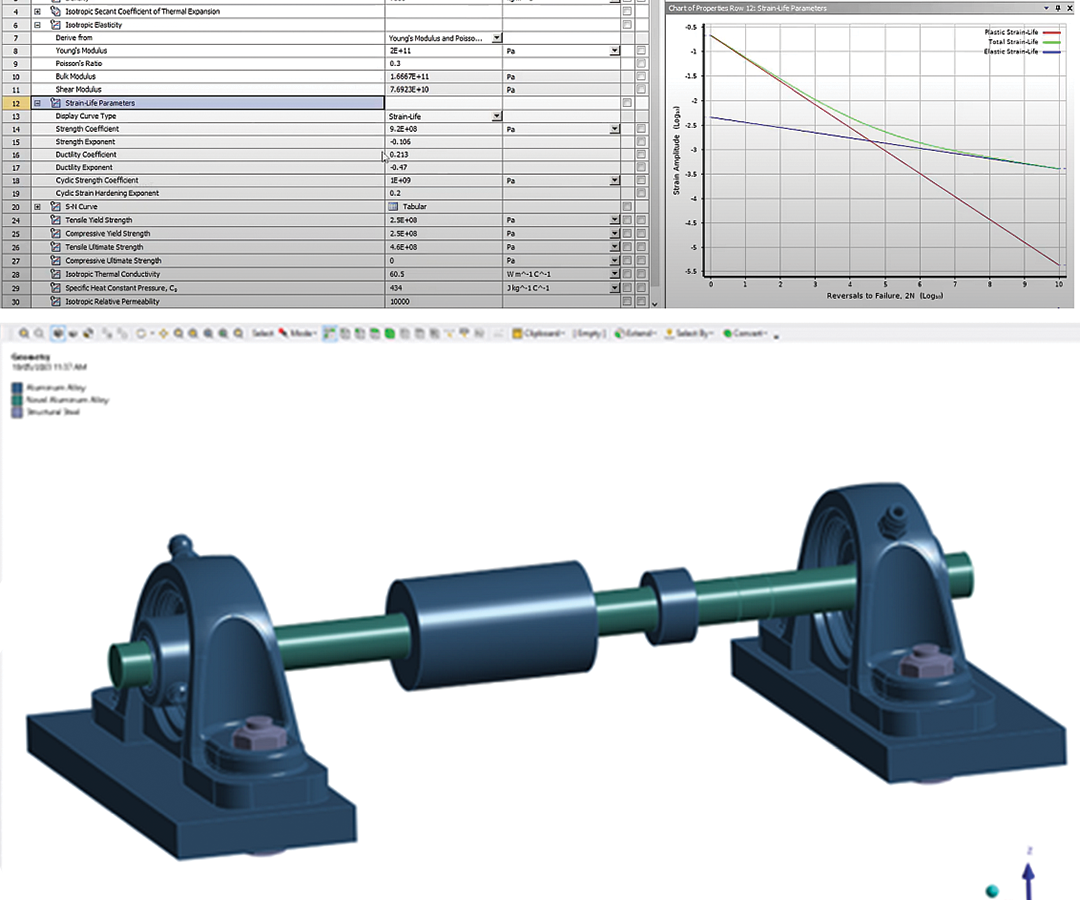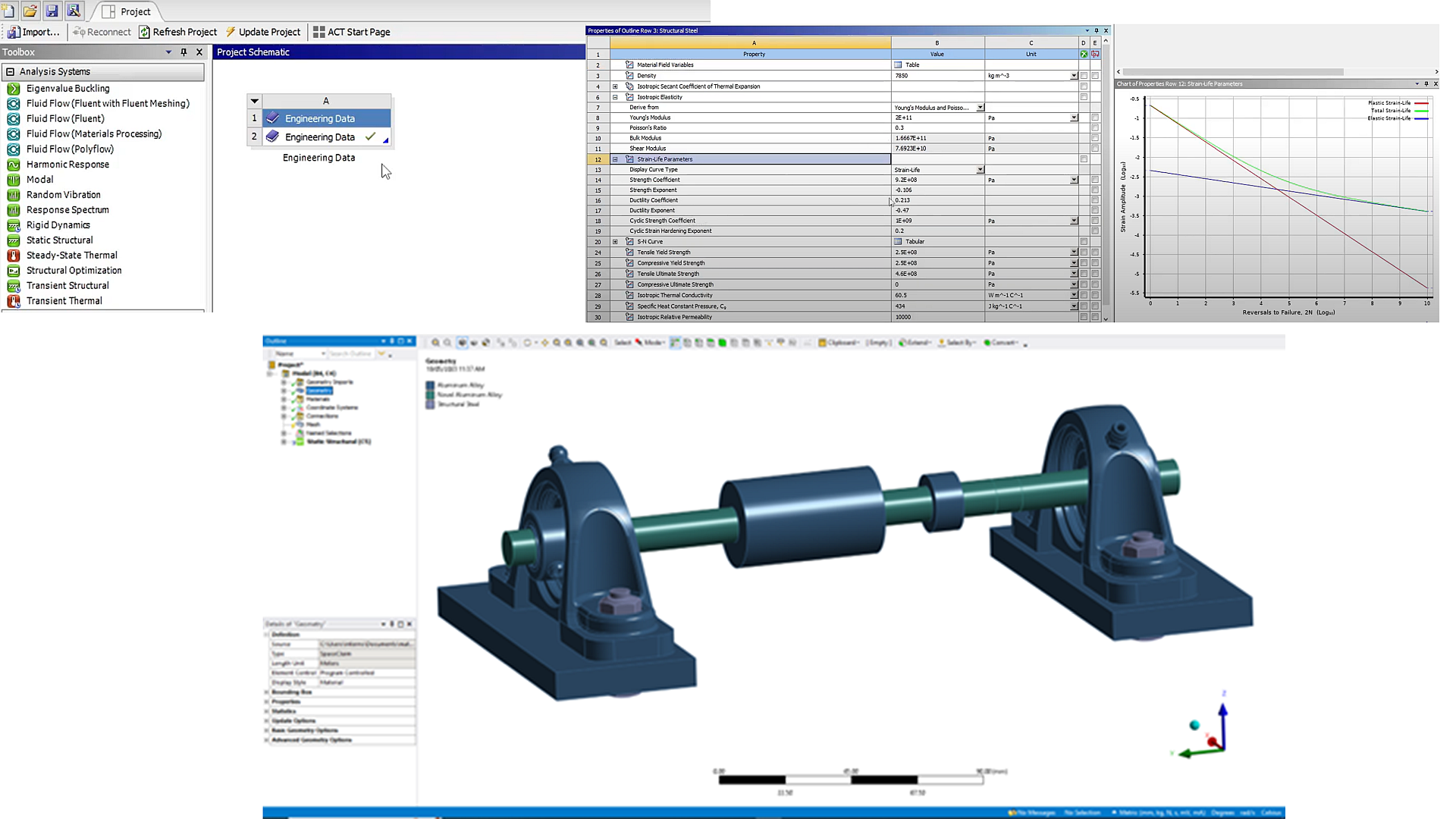Material selection plays a crucial role in the design and analysis of mechanical structures. The choice of materials significantly affects the behaviour, performance, and durability of a product. With the aid of ANSYS Mechanical engineers can make informed decisions regarding material selections. This blog explores the importance of material selection and demonstrates how ANSYS Mechanical can assist in speeding up this process.
ANSYS Mechanical provides both a comprehensive material database to choose from and a specialised platform to evaluate and compare the behaviour of different materials to make informed decisions.
The following video demonstrates how one can browse the comprehensive material database, add materials to the current study, edit existing materials or create new materials altogether. Techniques that allow you to speed up material assignments in multibody geometries are also included. Finally, a design parameter setup is explored to easily run multiple simulations and choose the optimal material for the design.
We hope you found this deep dive into ANSYS Mechanical material assignment useful. If you have any other questions or would like our help to get started with this feature please comment below or contact our technical support team.






